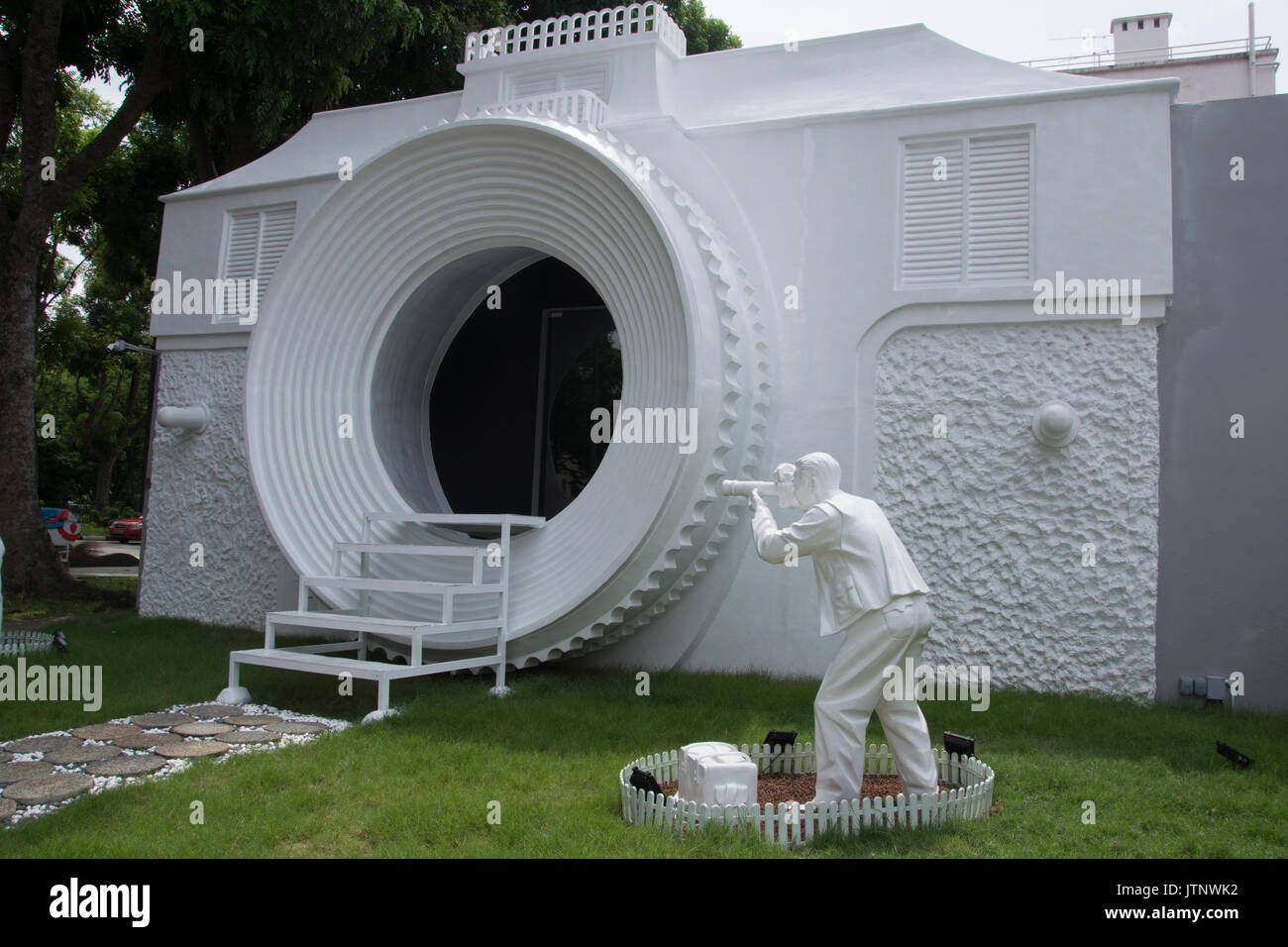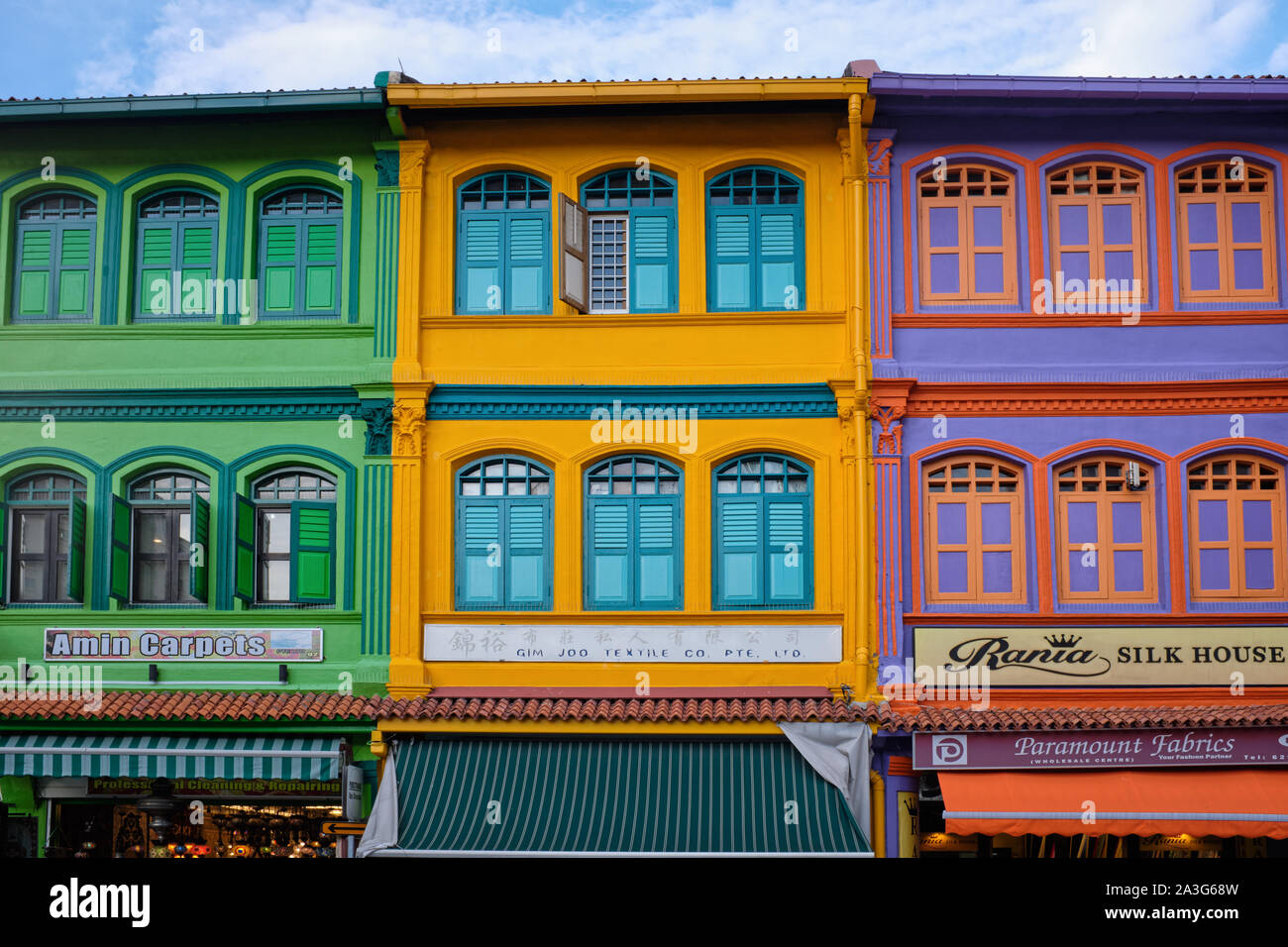Trading Post Kampong Glam
By the end of 1819 Sultan Hussein had built his palace-of-sorts in this area. Also known as Kampong Glam is an area in Singapore that once formed the Muslim quarter.

A Forgotten Past The Last Royal Palace Of Singapore Singapore Photos Singapore Royal Palace
Its located north of the Singapore river.

Trading post kampong glam. Kampong Glam c1830 Campong Gelam estate one of 10 sub-zones of the Rochore area located in the central region. Kampong means villagesettlement and Glam species is a botany member of the jambu family and related to Australia Eucalyptus tree which is useful in treating almost every known ailment. Kampong Glam covers 56 acres of land located to the east of the 19th century European town in Singapore between the Rochore River and the sea.
Walk around the area as nightfall takes. From Everything To The Very Thing. The rest of Singapore and its surrounding islands and waters outside the trading post remained under the sovereign control of the Malay rulers.
The Sultan of Johor signed a treaty in 1819 to allow the British East India Company to set up a trading post in Singapore. The mosque is the largest in Singapore and is named after Sultan Hussein the man who negotiated with Raffles back in 1819 to establish Singapore as a trading post.
Muslim heritage defines the skyline in Kampong Glam. Kampong Glam was designated for the Sultan and his household as well as. Which ultimately broke the Dutchs monopoly control of the SEAsian Spice trade.
Kampong Glam was derived from the Gelam tree which grew in abundance in the area long ago. Back then in 1819 when Stamford Raffles arrived he negotiated and made a treaty with Sultan Hussein Shah then sultan of Singapore to set up a trading post for the British East India Trading Company. Kampong Glam is an enclave for the Malay and Arabs community according to Raffles Town Plan of 1822.
Family were set up by Raffles. The trade was mostly commercial since since 1819 they had a. Ad Check hotel Photos Reviews Book Now Save up to 80.
When the inhabitants of Kampong Glam and the British began to coexist with the Raffles Plan of 1822 the neighborhood came under the rule of the Sultan of Hussein. They also agreed to set aside Kampong Glam as a settlement for the Malay-Muslims in Singapore. The mighty Sultan Mosque or Masjid Sultan as its known in Malay is central to this bustling village.
During the colonys early history under theRaffles Plan of 1822 the settlement was divided according to different ethnic groups which included European Town ChineseChulia Arab and Bugis kampongs. Its home to the beautiful Sultan Mosque and has quite an unusual mishmash of cloth merchants Middle Eastern restaurants and hipster shops all rolled into one heritage district and its also one of the few places in. Following the signing of the treaty the Sultan was paid a nice little lump sum received a very healthy annual allowance and Kampong Glam was designated for the Sultan and his household with separate areas in the neighbourhood.
One group of immigrants was the the successful and influential Arab traders who left their indelible mark when streets in the area were named after Arabian cities such as Arab Street Bussorah Street Muscat Street and Baghdad Street in the early 1910s. Ad Looking For Great Deals On Trading Post. The treaty allowed the company to set up a trading post in Singapore.
The company was given the right to set up a trading post in Singapore under this treaty. Singapores Kampong Gelam is a story about a cosmopolitan village named after the gelam kayu putih or Melaleuca cajuputi tree which once grew in abundance in the areathat birthed some two centuries ago. When british came to Singapore in 1819 a treaty was signed between the British East India company Sultan Hussein Shah of Johor and Temenggong Abdul Rahman.
As part of the agreement the Sultan was offered a stipend and given Kampong Glam as settlement for his palace and subjects. Raffles agreed and contributed 3000 to the construction of the mosque. Under the terms of the treaty the British trading post covering roughly the area from Kampong Glam to Chinatown would be jointly administered by the British and the Malay rulers.
As a result the area was occupied by Arabs and Malays. Kampong Gelam Gelam Village whose name is derived from the Gelam trees Melaleuca cajuputi which grew in the area became the seat of the sultanate in Singapore. Kampong Glam is a collection of streets each with their own unique character.
The company was given the right to set up a trading post in Singapore under this treaty. In 1819 Sultan Hussein signed an agreement with Stamford Raffles of the British East India Company allowing the British to establish a trading post on the island. Hussein then requested for a mosque to be built near his istana Malay for palace in Kampong Glam.
Before Singapore became a British trading post Malay communities had settled on the river banks of Rochor River near to Kampong Gelam. Kampong Glam or Kampong Gelam is known as the heritage ArabMuslim quarter in Singapore and one of my places to find street art in Singapore. On 7 July 1989 Kampong Glam was gazetted a conservation area and will become a.
During the colonys early history under the Raffles Plan of 1822 the settlement was divided according to different ethnic groups which included European Town Chinese Chulia. THE HISTORY OF KAMPONG GLAM. The 18 th ruler of Johor Sultan Hussein Muazzam Shah ibni Mahmud Shah Alam 1776-1835 built the original Istana Kampong Glam at Beach Road in 1819 after he signed a treaty with Sir Stamford Raffles ceding Singapore to the British as a trading post.
It is located north of the Singapore River in the planning area of Rochor known as the Malay-Muslim quarter. When Stamford Raffles arrived in 1819 he negotiated with a Sultan Hussein to set up a trading post for the British East India Company. Kampong Gelam old name.
It was a thriving. Kampong Glam was derived from the Gelam tree which grew in abundance in the area long ago. When Stamford Raffles arrived in 1819 he negotiated with a Sultan Hussein to set up a trading post for the British East India Company.
Ad Find best section Lost River Clothing online at great prices and fast shipping. His eldest son Sultan Ali Iskandar Shah died 1877 hired Irish architect George Drumgoole Colemanl 1795. Kampong Glam Malay.
One group of immigrants was the the successful and influential Arab traders who left their indelible mark when streets in the area were named after Arabian cities such as Arab Street Bussorah Street Muscat Street and Baghdad Street in the early 1910s.

Vintage Singapore High Resolution Stock Photography And Images Alamy
Komentar
Posting Komentar